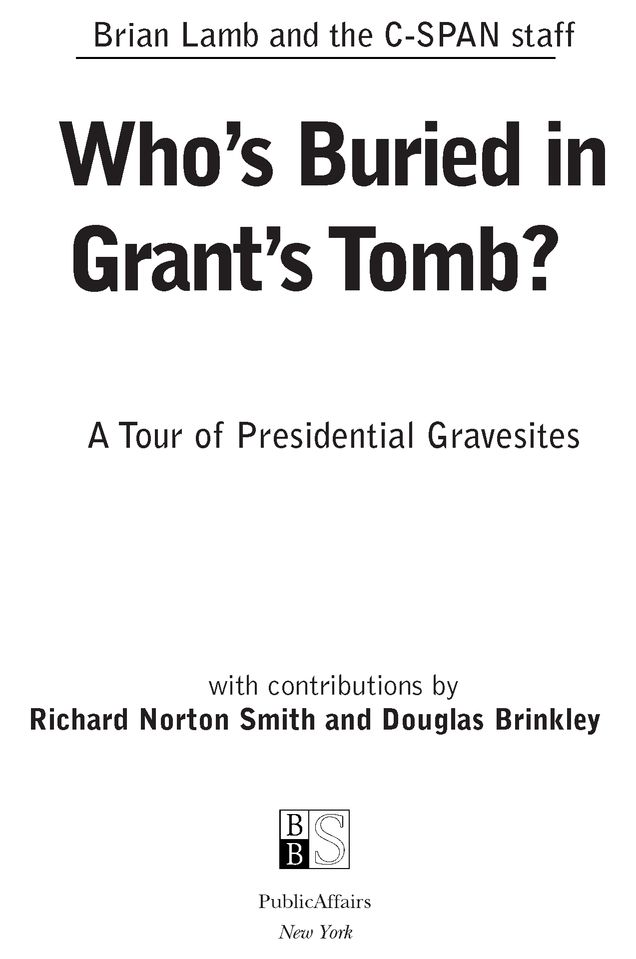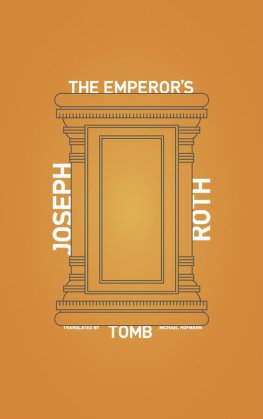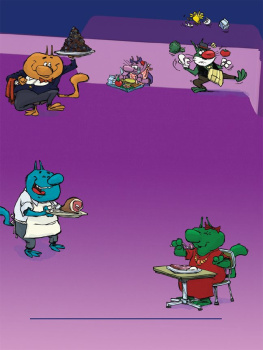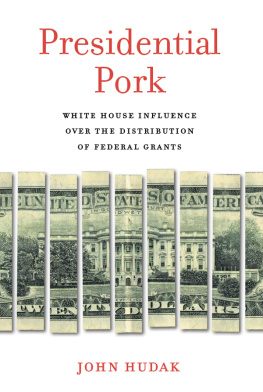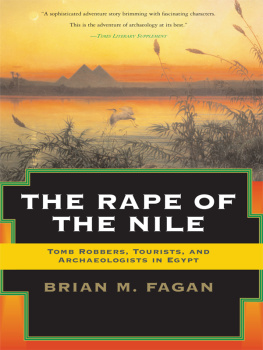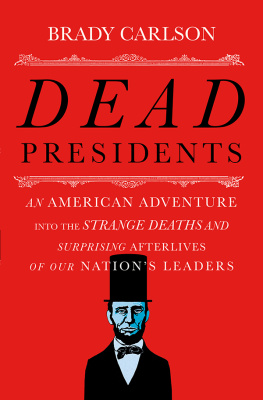Table of Contents
To the memory of
Eric Clitheroe (1907-1986)
a great teacher
Bill Hartnett (1936-1980)
a true public servant
Cal Andringa (1941-1997)
a good friend
Foreword
Forty-Three Men and the Great Adventure
By Presidential Historian Richard Norton Smith
And what the dead had no speech for, when living,
They can tell you, being dead, the communication
Of the dead is tongued with the fire beyond the
language of the living.
T.S. Eliot
Do not believe the old axiom that dead men tell no tales. In truth, they comprise a virtual Spoon River of self-revelation. Not long before he died, Herbert Hoover chose a burial site on a gentle knoll in his boyhood home of West Branch, Iowa. Hoover gave instructions that nothing was to be built or planted that might obstruct the view between his final resting place and the tiny, 14- by 20-foot white frame cottage where his life began in August 1874. The old man wished to draw the visitors attention to the two-room dwelling, its dimensions identical to those of the modern American living room. What Hoover really wanted to celebrate was the American dream, as embodied in the life of an Iowa blacksmiths son who would feed a billion people in fifty-seven countries, and serve one, mostly unhappy, term in the White House.
Even more reticent than the Quaker orphan from West Branch was his sphinxlike predecessor, Calvin Coolidge. No friend to pomp, Coolidge once observed that it is a great advantage to a President, and a major source of safety to the country, for him to know he is not a great man. Consistent with this philosophy, he scornfully rejected the offer of a wealthy friend to build him and his family a gleaming marble mausoleum near the old homestead in Plymouth Notch, Vermont. Today the nations thirtieth president lies beneath a plain granite headstone, alongside five generations of Coolidges, including the mother and son whose early deaths cast a permanent shadow across this shy, sentimental Yankee.
It was to Plymouth that I talked my parents into driving me in the summer of 1962, a few months before my ninth birthday. There, beneath the looming purple mass of Salt Ash Mountain, we discovered a toy village of six houses, a number unchanged since Coolidge was born at the back of his fathers country store on the Fourth of July 1872. From this modest beginning grew a hobby that would strike others as only slightly less ghoulish than graverobbing. Classmates celebrated the Celtics and Bruins, deconstructed the lyrics of Lennon and McCartney, pulled trout out of local streams, or pasted stamps in a book. Some collected baseball cards. I collected deceased presidents. Dead men talking.
As a youngster of annoying precocity, I was entrusted with planning responsibilities for each summers family vacation, thereby exposing my siblings to these and countless other gravesites, battlefields, and historic homes. My fellow passengers in this station wagon hell, immune to the thrill of the chase that motivates any true collector, took what consolation they could in each nights motel pool. The pursuit of underground history, so to speak, is not for the faint of heart, as we discovered one evening at the corner of Witherspoon and Wiggins Streets in Princeton, New Jersey. Twilight was falling; to prevent being locked in for the night, the family car was parked astride the cemetery gates.
In life a three hundred pound mountain of a man, in death Grover Cleveland is anything but conspicuous. Tracking my quarry by headlight beams, ten minutes went by. Fifteen. Twenty. Adding to the surreal tone of the hunt, who should I come upon butAaron Burr? As an unreconstructed Hamiltonian, I was tempted to do an impromptu jig on the old reprobate, but time was growing short, the night was growing dark and everyone in the car was growing nervous lest we be arrested for trespassing. Eventually a kind, if dubious, groundskeeper appeared, flashlight in hand, to point out the modest stone marker and urn that adorns the Cleveland plot.
Those who haunt cemeteries can sometimes put their own mortality at risk. As the nations first dark horse presidential candidate in 1844, James K. Polk sparked little fer vor (James K. Who? sneered rival Whigs who rallied to Henry Clay). Polk is still easily overlooked; on a broiling August afternoon in 1976, I contracted sunstroke while scouring a treeless expanse of lawn surrounding the Tennessee State Capitol in Nashville in search of the president who added more real estate to the United States than any other. Sic transit gloria.
Another youthful summer was spent in Ohio, a state which, as the self-proclaimed Mother of Presidents, is also the mother lode of presidential gravesites. By and large, chief executives from the Buckeye State demonstrate an inverse ratio between accomplishment in life and the lavishness with which that life is memorialized. (Of course, who would remember Cheops were it not for his pyramid?)
Consider Warren Gamaliel Harding. Nothing so became Hardings life as his leaving it. His messy death in a San Francisco hotel room in August 1923 led to journalistic speculation that his wife, Florence, had poisoned him. In the years since, a scholarly consensus has formed around the belief that she didnt, but should have. Today the Hardings rest unquietly on the outskirts of Marion, Ohio, condemned to an intimacy largely avoided in life, thanks to the generosity of countless schoolchildren who donated their pennies to construct a great hollow drum of white Georgia marble. Not far away is the famed front porch where Harding in 1920 proclaimed his desire for normalcy, and Mrs. Harding shooed away local mistresses whose desires ran in other channels.
Still another occupational hazard, a disappointed officeseeker, ended James Garfields brief term in the summer of 1881. Angered over Garfields refusal to give him the Paris consulship, Charles J. Guiteau shot the president in a Washington, D.C., railroad station. Guiteau had another motive for his crime: a frustrated author hoping to spur sales of his book, he anticipated todays tabloid culture, wherein notoriety is the surest ticket to a gig with Larry King (even if modern criminals generally wait until after committing an outrage to take the agents call.)
In the feverishly inventive Gilded Age, even a mortally wounded president could inspire technological advancein Garfields case, the worlds first indoor air conditioning system. Amid the stifling heat of a Washington, D.C., summer, a group of Navy engineers was summoned to the White House. Improvising a blower to force air cooled by six tons of ice through a heat vent in the presidents sick room, they succeeded in lowering the temperature twenty degrees.
The patient remained snappish, hardly surprising given his diet of oatmeal and lime water. Told that the Indian warrior Sitting Bull was starving in captivity, Garfield snorted, Let him starve. On second thought, a still more wicked alternative suggested itself. Oh no, said Garfield, send him my oatmeal.
Equally unrepentant, if decidedly more convivial, was Zachary Taylor, who declared on his deathbed, I have no regret, but am sorry that I am about to leave my friends. It will come as no surprise that the same nineteenth century that reveled in gloom took a morbid interest in last words. Everyone recalls John Adams poignantly inaccurate declaration of July 4, 1826, Thomas Jefferson still survives. Less well known is Jeffersons political testament to his countrymen, contained in a letter published that very day in Washingtons


